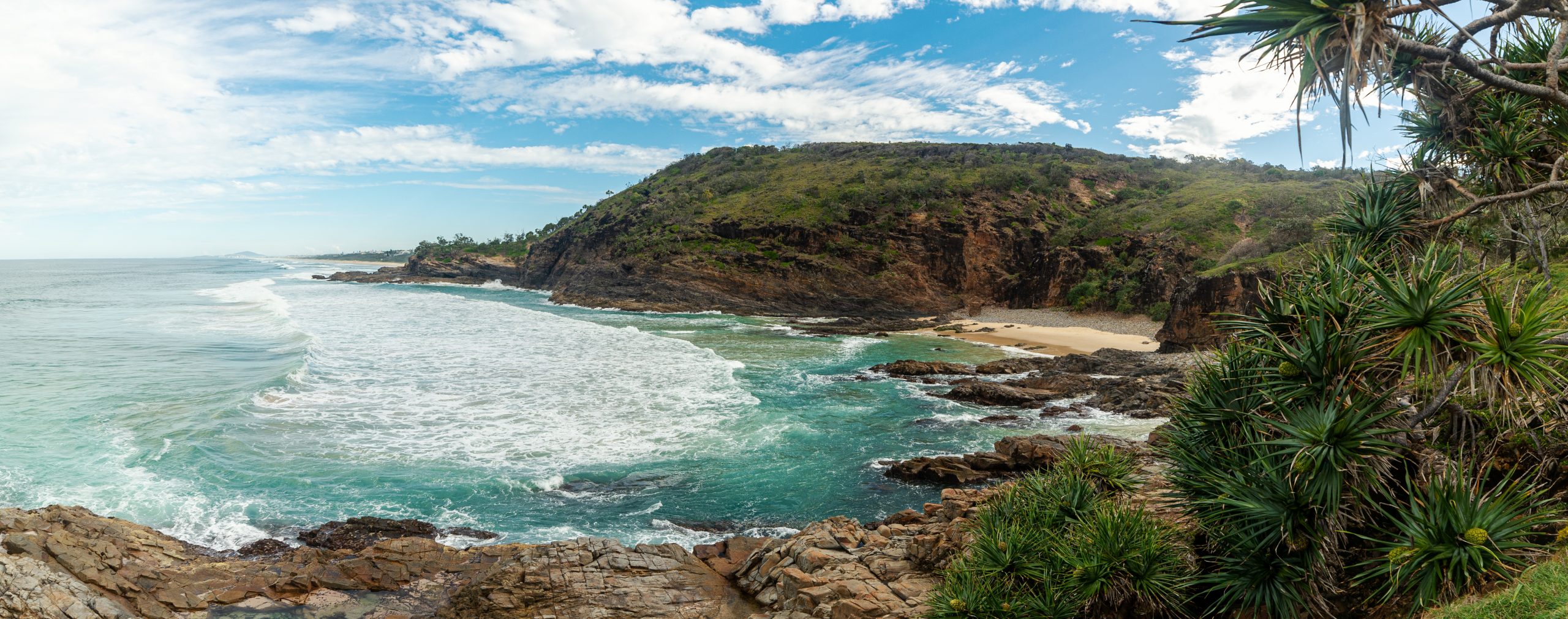Many coastal tourism destinations, defined as a specific geographic territories where tourism is one of many sectors in the local economy, have a high level of vulnerability to climate change, which puts them in considerable danger over multiple timescales[1]. This essay briefly considers factors that determine destination resilience, outlines the threats faced by coastal destinations and considers five key interlinked strategies to help the coastal and marine tourism industry and destination communities build resilience and successfully respond to a range of shocks including climate change and transition to net-zero greenhouse gas (GHG) emissions.
Threats to coastal destinations
The Intergovernmental Panel on Climate Change (IPCC) has published a concise identification and impact assessment of climate change threats to coastal areas based on current and projected GHG emission levels[2]. Key issues include impacts on ocean and coastal ecosystems through increased frequency of marine heatwaves (habitat collapse, coral bleaching, loss of kelp forests and seagrass meadows, abrupt shifts in ecosystem composition, disruption of food webs, etc.); worsening impacts on marine life through anthropogenic drivers (overfishing, invasive species and habitat degradation, etc.); rapid changes in temperature and sea levels that cause economic loss and emotional harm; changes to global recreational and cultural practices; changes to ecosystem services provided by marine systems (changes to catch composition and species diversity, loss of traditional food sources, etc.); loss of cultural heritage; and increased risk of inundation in coastal urban settlements. In addition to these impacts, the coastal tourism industry faces loss of key marine attractions, degraded beaches and recreational fishing areas, inundation of tourism infrastructure, loss of visitor markets and the cost of responding to these impacts.
The potential loss of coral reefs highlights just one of the adverse impacts caused by climate change. As the frequency of marine heatwaves increases in coming decades, coral-reef-dependent destinations, including small island states, will lose key marine tourism resources, bringing severe social, economic, political and community disruption[3].
Resilience
In a tourism context, resilience is the tourism system’s ‘evolutionary capacity to absorb disturbances (or perturbations) and reorganise while undergoing change…to maintain its fundamental function, structure, identity and feedback [systems]’[4]. Disturbances include known natural disturbances (climate change, windstorms, volcanic eruption, earthquakes, etc.), known economic disturbances (transition to net-zero GHG emissions) and unknown threats (pandemics, global financial crises, war, etc.) of various magnitudes that may occur over the short, medium or long term. Reorganisation is the ability of industries and communities to identify and respond to threats through a willingness to adapt. Resilience can be measured from several perspectives, including those of business, the collective community, individual community members, ecology, engineering, governance and leadership. Resilience strategies must include the impact of climate change and the impacts of transition strategies.
Factors that determine resilience
Building destination resilience to negotiate uncertainty requires identification and assessment of threats (e.g. climate change) over multiple timescales; assessment of how threats will affect specific economic sectors such as tourism; access to science-based, high-confidence-level projections of the impacts of climate change; and adoption of an agreed strategic response framework. Evolutionary resilience in this process is the ability to adapt to and reconfigure all aspects of the destination in circumstances where economic, social, political and climate systems are evolving rapidly and often unpredictably.
The success of resilience-strengthening strategies will depend on positive leadership by political, community and business leaders at destination, regional and national levels; agreement by all sectors of the destination community that climate change is a long-term challenge; an ability to accept change and the need to adapt; access to funding support for resilience-building; supporting legislative processes at all levels of government; understanding the concerns of tourists; establishment of feedback loops; and recognition that unexpected system-wide exogenous shocks will occur with little or no warning (pandemics, global financial crises, war, political unrest, etc.). An inability or unwillingness to respond, a possible outcome of institutional inertia, will negatively affect resilience and may indicate that a destination is locked into a particular world view that hampers its ability to identify alternative development pathways leading to long-term resilience.
Building resilience
It is not yet possible to estimate at what level or when global temperatures will stabilise or when and at what height sea level rise will cease. Because of this uncertainty, short-term resilience strategies may be achievable, but developing realistic long-term adaptation strategies is far more difficult, particularly when the economic impacts of transition to net zero are unknown.
In the short, medium and long term, the resilience of coastal zone settlements depends on factors including the success of international actions to avoid warming above 1.5°C (transition), national adaptation strategies, and the ability of destination-level communities to respond to anticipated changes. As climate change impacts will be destination-wide, a whole-of-community approach is more effective than uncoordinated responses by individual sectors, such as tourism.
Key strategies
Strategies to build the tourism industry’s resilience and reduce its vulnerability will strengthen the overall resilience of the destination economy and community. For coastal and marine tourism, the sector must first determine how it will be affected by climate change and transition to net zero over multiple timescales, based on rigorous scientific understanding. Second, there must be an authentic assessment of the likely impacts on visitor demand over the long term. Third, there must a detailed economic assessment of the costs of climate change plus the cost of resilience measures over the short, medium and long terms. Fourth, an effective knowledge management system must be developed that works in parallel with a governance system able to coordinate resilience-building over multiple decades. Fifth, destinations will need to develop a planning and implementation framework that draws together the previous points.
Determining effects of climate change
IPCC reports provide a goldmine of information useful for determining the impacts of climate change. Rigorous scientific investigation of impacts at the ecosystem level is also required. At national levels, additional tools are required. The U.S. Federal Emergency Management Agency has developed an online National Risk Index for Natural Hazards that identifies community-level risk factors for 18 natural hazards, including risk metrics for annual losses, social vulnerability and community resilience[5]. For example, Palm Beach County, Florida, a key tourism destination, has a risk index of 57.71, compared to the average risk index for Florida of 19.65 and for the United States of 10.60. In Australia, the Climate Council has developed a free, downloadable interactive climate risk map that allows users to assess risk over time and multiple event scenarios, including coastal inundation, flooding, bushfires and extreme wind, down to the suburb level[6].
Assessment of visitor demand
Many key coastal tourism resources such as coral reefs will decline rapidly in coming decades. The tourism sector must identify how tourists may respond to these changes, identify and develop currently unused tourism resources and identify and build new visitor markets. Tools such as the Tourism Climate Index, which can measure visitors’ responses to increased temperatures, and the Strategy Development and Data Collection Framework can assist in these tasks[7].
Economic assessment
Understanding the value of coastal tourism assets, the income generated by coastal tourism and the cost of defending, abandoning or relocating is critical. Information of this type will help tourism businesses make informed decisions about new investment, relocation or disinvestment. Local and other levels of government also need this information to assess development applications and plan infrastructure investment. Standard economic tools that can be employed include costed scenarios, computable general equilibrium models and cost-benefit analysis.
Knowledge management
Since climate change will affect the whole destination, not just the tourism industry, a whole-of-community response is required to build tourism and destination resilience over the long term. To be effective, strategies of the type outlined above require a high level of knowledge management based on knowledge-sharing and knowledge co-production (dynamic interaction among stakeholders to generate new knowledge) among all destination stakeholders. One solution is to adopt a ‘learning destination’ approach[8] that embraces close cooperation and knowledge-sharing among all members of the community—including the tourism sector, the business sector, government and external stakeholders—to develop resilience strategies that benefit the entire community. One example of applying a learning destination approach is Ningaloo, a coral reef destination in Western Australia and another example can be found in Florida, USA [9],[10]. This approach embraces systems thinking, adaptive management and participatory research to achieve collective resilience objectives through a continuous process of action, monitoring and reappraisal, ideally based on sustainable development[11]. Systems thinking, described as a ’tool for developing systemic awareness by seeing the “big picture” and recognising the patterns and interrelatedness of parts of a system’, is a major element of this approach[12]. Difficulties will be encountered where key stakeholders have divergent agendas.
Planning and implementation
The final strategy entails building on the previous strategies to develop a planning and implementation framework that can respond to the impact of climate change on specific destinations and the larger economy-wide impacts of transition. This will be the most difficult aspect of achieving long-term resilience. The myriad issues related to the planning, construction and operation of mobile barriers in Venice to protect the city from flooding and rising sea levels illustrate the complexity of this task. Recent thinking around the concept of smart cities provides insights into how to deal with such issues[13]. From an industry perspective, the Queensland (Australia) tourism industry has funded a sector adaptation plan that highlights a range of adaption efforts required to build resilience to climate change[14].
Key issues that will need to be resolved include equitable distribution of benefits and costs between stakeholders. This will require trade-offs among stakeholders and agreement to settle on second-best solutions where dispute resolution is difficult. The time-space compression of change must also be equitably managed as destinations are forced to rapidly respond to new technologies and governance principles to build resilience.
Conclusion
Developing the capacity to build resilience destinations will require a high level of cooperation among a range of stakeholders, many of whom will have little experience of this type of exercise. The five-point plan outlined above highlights a range of interdependences that have rarely been operationalised in the past. The tourism sector will need to recognise its interdependence with other sectors of the local economy, learn to actively cooperate with all key stakeholders and to adapt, develop substitute attractions and attract new visitor markets.
—–
[1] Intergovernmental Panel on Climate Change (IPCC), Climate Change 2022: Impacts, Adaptation, and Vulnerability, Contribution of Working Group II to the Sixth Assessment Report of the Intergovernmental Panel on Climate Change, edited by D. Pörtner et al. (Cambridge: Cambridge University Press, forthcoming).
[2] IPCC, Climate Change 2022.
[3] B. Prideaux and A. Pabel, eds., Coral Reefs: Tourism, Conservation and Management (London: Routledge, 2018).
[4] P.F. Bangwayo-Skeete and R.W. Skeete, “Modelling Tourism Resilience in Small Island States: A Tale of Two Countries,” Tourism Geographies 23, no. 3 (2021): 436–57; quotation 437.
[5] Federal Emergency Management Agency, “The National Risk Index,” https://hazards.fema.gov/nri/.
[6] Climate Council, “Climate Risk Map of Australia,” 2 May 2022, https://www.climatecouncil.org.au/resources/climate-risk-map/.
[7] B. Prideaux, M. Thompson, A. Pabel and L. Cassidy, “Managing a Climate Change Crisis Event at the Destination Level,” Journal of Hospitality and Tourism Management 49 (2021): 451–59, https://doi.org/10.1016/j.jhtm.2021.10.006.
[8] D. Sadd, A. Fyall and K. Wardrop, “Evaluative Event Frameworks: A Learning Destination Perspective,” International Journal of Tourism Research 19, no. 3 (2017): 339–48.
[9] K. Schianetz, T. Jones, L. Kavanagh, P.A. Walker, D. Lockington and D. Wood, “The Practicalities of a Learning Tourism Destination: A Case Study of the Ningaloo Coast,” International Journal of Tourism Research 11, no. 6 (2009
[10] D. Sadd, A. Fyall and K. Wardrop, “Evaluative Event Frameworks: A Learning Destination Perspective,” International Journal of Tourism Research 19, no. 3 (2017)
[11] Schianetz et al., “The Practicalities of a Learning Tourism Destination.”
[12] Schianetz et al., “The Practicalities of a Learning Tourism Destination,” 568.
[13] G. Halegoua, Smart Cities (Cambridge, MA: MIT Press, 2020).
[14] S. Becken, N. Montesalvo and E. Whittlesea, Building a Resilient Tourism Industry: Queensland Tourism Climate Change Response Plan (Brisbane: Queensland Tourism Industry Council, 2018), https://www.qld.gov.au/__data/assets/pdf_file/0036/68697/building-resilient-tourism-industry-qld-ccr-plan.pdf.


 Previous
Previous


